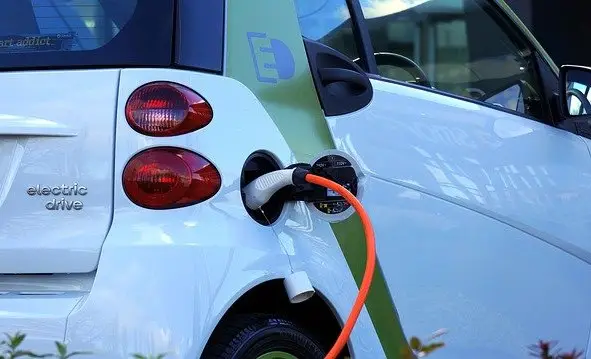Fine-scale analysis of the supply of charging stations
As a "data e-mobility expert", we update our charging station cadastre* at regular intervals and determine the supply on the basis of the official registration figures from the KBA (Kraftfahrt-Bundesamt - German Federal Motor Transport Authority).
As of October 2021, 268 of 401 counties were already under-served, or 66% of all counties! This is a dramatic increase compared to 2020, due to the strong increase in e-vehicles. By comparison, there were only 27 counties in October 2020.

The basis for the calculation is the recommendation of the National Platform for Electromobility (NPE) advisory body with an average maximum of 12.5 e-vehicles per charging station (see "Calculation of charging station coverage" below).
But what is the actual supply like now? How many public charging stations do we need? Because the private charging infrastructure must also be taken into account.
Promotion of charging stations
As of May 2021, KfW (Kreditanstalt für Wiederaufbau) had received more than 470,000 applications for funding for a private wallbox, most of which are likely to be in operation by now, as up to 80% of charging takes place at home or at work.
What is the coverage rate for charging stations in Germany?
The fact is that the expansion of the charging infrastructure is lagging behind the registration figures. The population has recognized the climate problem and many are already thinking about replacing their diesel or gasoline engine with an e-car or hybrid model when changing or buying a new car. This is proven by the 56% growth rate of e-cars compared to the previous year.
The crucial question must always be asked: How many pillars does the country have and need?
This question is not so easy to answer, because supply varies greatly fromregion to region and depends on numerous factors. Therefore, an intelligent expansion of the public charging infrastructure is necessary, taking into account regional aspects such as mobility behavior, commuter flows and private charging options.
For these analyses and forecasts of the need for charging infrastructure, fine-grained data is used, e.g. on demographics, mobility behavior, car ownership of e-cars, number of charging stations, and data on parking spaces and garages.
Coverage dashboard
How is the supply in your County? Create your personal forecast with our interactive dashboard. Using the slider you can individually adjust the "growth rate in %", calculate the supply development live and visualize it at the same time.
How many charging stations are there really in Germany and how good is the supply?
The providers of a directory or an app to search for charging columns usually only consider a part of the existing locations, be it locations of the BDEW or the Federal Network Agency. Each source always contains only a part of relevant data, which prompted Nexiga as early as June 2019 to build its own database with the "*Nexiga charging station cadastre" (which can be linked with numerous other market and geodata ). Here, public and partially public charging stations are combined and updated on a monthly basis.
Calculation of charging station coverage
The basis for the calculations is the former recommendation of the advisory body National Platform for Electromobility "NPE" (which was transferred to the National Platform for the Future of Mobility "NPM" in 2018), with an average maximum of 12.5 e-vehicles per charging station.
Based on this recommendation, we have calculated a coverage rate for Germany as a whole of 15.9 e-cars per charging station. This is above the NPE* recommendation of 12.5 e-cars.
In the meantime, there is a more recent recommendation based on a study of the charging infrastructure for 2025/2030 by the National Charging Infrastructure Control Center (NOW GmbH), in which the private infrastructure and the structure of the area (urban, rural) are also taken into account in the forecasts.
Depending on the type of area, the ratio for 2030 will vary. The study team determined the following ratio of the number of e-cars to charging points:
- for the urban area of 14:1 and
- for suburban and rural areas of 23:1.
The *Nexiga charging station cadastre
Nexiga has already been building up its own database since June 2019. At the end of December 2021, 33,857 charging station locations with a total of 90,959 charging points were recorded in the database.
The charging stations of the six largest sources/databases are compared spatially and in terms of content on a monthly basis in a complex process. Both public and partially public charging stations, e.g. in supermarket parking lots, are taken into account. Up to 10 additional pieces of information are available for each location.
In addition to address and geo-coordinate, additional features such as type (normal/fast), power, plug types, operator or the location type (highway, supermarket, hotel) are available.
In addition to the charging station register, there is also a garage register (charging at home) and a solar register (electricity for e-cars), which contain numerous other data that can be used for data-based analyses and forecasts.
How many charging stations are there really in Germany and how good is the supply?
E-cars also include plug-in hybrid vehicles and charging points and not charging stations are used as a reference. Therefore, the recommendations are not comparable with the previous recommendations of the NPE!
Source: Click here.
CONCLUSION
- There are no clear criteria for the supply of charging infrastructure, nor is there a uniform database for the inventory. Therefore, there are different results and conclusions on the degree of coverage.
- Fine-area analyses are better than averages for all of Germany. Taking the spatial structure (urban, rural) into account when analyzing supply is a step in the right direction.
- In our view, the charging pole cadastre and fine-grained data on registrations are helpful in analyzing the level of coverage.
